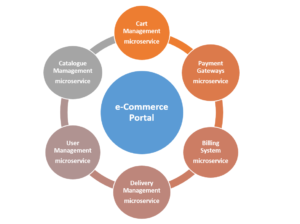Trends keep evolving with the passage of time and it is very important to be able to keep up with them in order to cater to the needs of your consumers. Companies need to adopt methods that are not only streamlined, but have been tried and tested to save time, money and effort, and at the same time provide the best-in-class products and services for their target markets.
Rolling out products, software, and services is critical, time-consuming and costly using traditional methods. With microservices-based scalable architecture, automation of testing jobs (functional, regression, performance) and automated deployments processes (DevOps and ChatOps); companies can now plan very aggressively to reach to their end customers.
To minimize the time, cost and efforts on development, testing and deployment of various platforms, the following mentioned best practices should be adopted. Let’s take a look at some of the best practices that yield maximum benefits.
1) Behavior-driven Development (BDD)
Behavior-driven development (BDD) is a software development method which focuses on desired business outcomes of a software specified according t in a way how its behavior should appear to the end user. In BDD developers target the “Behaviour” and derive test cases for the code that has been written. Tests have been written in “given-when-then” notation which are in daily use and easy to understand by developers, testers and domain experts. Here is an example of such a test.
Given: Some context in terms of user story, scenario, test condition
When: Some action is carried out corresponds to given statement
Then: A positive / negative output, observation, expected result should obtain
An example
- Given (Scenario/ User Story): Point of sale only accepts VISA cards as a payment option
- When (Action by user): Attempt to perform a transaction with MasterCard on given point of sale
- Then (Expected Result): POS system displays a message to user “Only Visa cards accepted here”
The benefits of BDD are listed below
- Efficient and Effective collaboration between teams which helps avoid communication gaps
- Crisp and clear understanding of features to be developed which increases confidence at all levels
- Increase the adaptability of rapid changes in the features
- Reduce the development and testing Time to Market
- Bugs are introduced in the early phase so cost of fixing is significantly low
2) Microservices-based Architecture
In a microservices based architecture, all services are divided into granular modules. The top most benefit of them being is developing, testing and deploying the granules independently as they are loosely coupled which makes it easier to enhance and add functions to the system at any point in time. This approach is widely in use for independent development and testing is achieved with increased productivity of resources, quality of deliverables and faster deployment in market. Also it provides greater flexibility to be sold each modules independently.
Microservices generally rely on REST API end points of each microservices which can be accessed over HTTP(S).

Example: E-Commerce web portal (Microservices based Architecture)
Benefits of using mircoservices-based architecture
- Modules developed independently will not be impacted because of the failure of other modules
- Modules can be developed in different languages and technologies so no stickiness to technology stake
- Easy to scale. Easy to Throw. Easy to roll back changes
- Maintenance is easy and faster because of small code size which will increase overall productivity, saves efforts and cost as well
- All modules will be developed and tested independently and can be sold separately as per customer need
3) DevOps Implementation

In layman’s language, DevOps is an automation of “Software Development Process” and “Software Operations Process”. Continuous Integration and Deployment followed by automated testing will make the entire process smooth, faster, cost effective and error free. Continuous Monitoring is also one of the aspects of DevOps which normally missed out during DevOps discussion. Companies that have multiple deployments during a day cannot use traditional methods as they are time consuming. Monitoring of their various environment for error free deployment and status update are important aspects.
DevOps is evolving significantly in IT industry because of various benefits listed below.
- More stable operating environments because of automated Operations process
- Higher the productivity in maintenance/fixing of code rather than to manage/Operate various environments
- Error-free environments which leads to faster product, function, feature delivery to market
- Faster and error free deployment saves overall time and cost
4) ChatOps
ChatOps – “Operations over the chat” as the name suggests. It is a collaboration tools in which various teams like Development, Testing, Operations, Management, Sales, Finance, Marketing connects over the chat room and can view what is being done, what to be done and what is happening. ChatOps helps connect people, process, bots (Bots – applications which perform automated tasks such as and not limited to Setup production environment, provide health of dev/test environments, Install applications in virtual environments, Status of Automated testing, log a bugs, booking flights for you, order pizza, setup alarms) and tools in an automated workflow.
Benefits of using ChatOps are listed below.
- Sharing of information in real time to remove communication gaps
- Increase team bonding, transparency which develops a team culture
- Teams can work and learn together
- Visibility of status across the board
- Reduce the efforts and cost of overall product/ feature
In earlier days software and product development, testing and deployment processes were hindered due to human errors, heavy time consumption, difficulty in deployment and rolling back changes. These processes have changed drastically in recent times by implementing easy to maintain architecture, easy to implement software lifecycle and automation at all levels to eliminate human errors, easy and error free deployment which eventually saves lot of time, efforts and costs.
In nutshell IT Industry is on a trajectory of new ways of maintaining product, projects, and processes by implementing lot of automation and these ways and means are going to be game changer. Please do take a look, if you are interested to learn about product testing priorities with interconnected devices.













